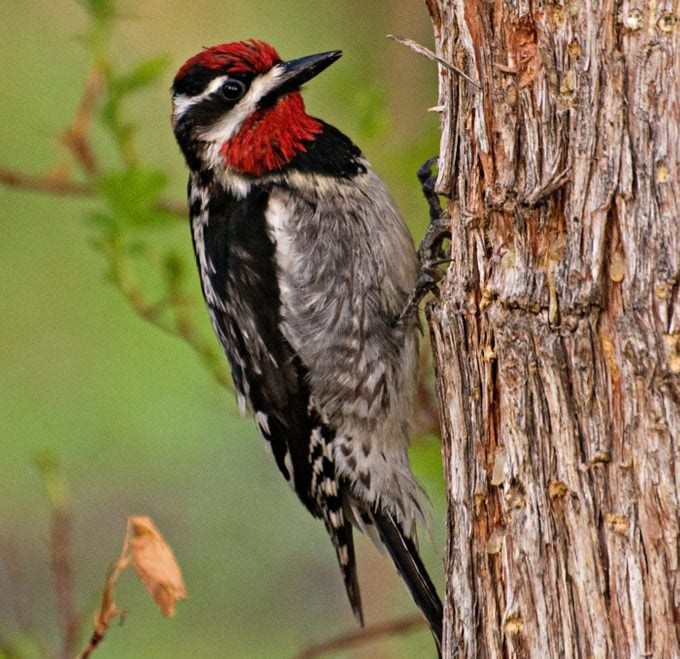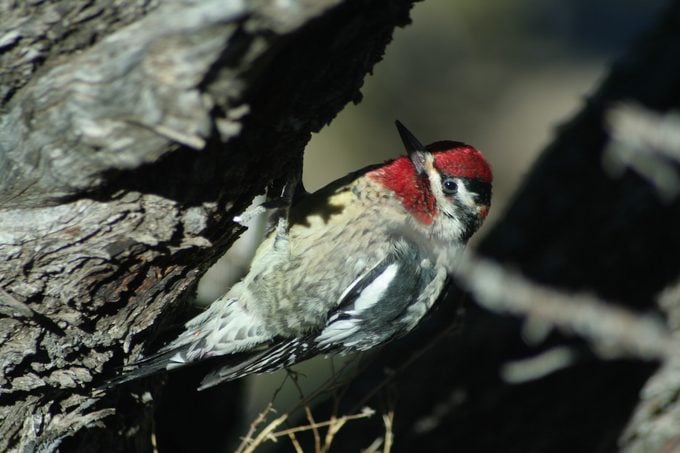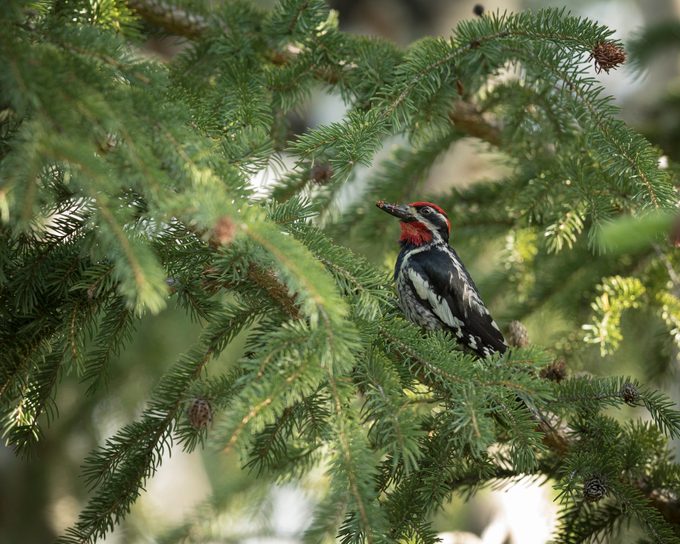Look for a Red-Naped Sapsucker in the Rocky Mountains
Updated: Oct. 02, 2023
Learn what a red-naped sapsucker looks like, and find out where to go to add this member of the woodpecker family to your life list.
Red-Naped Sapsucker Identification

It’s not too difficult to spot a red-naped sapsucker. With their red caps and red throats, they stand out well against the brown backdrop of tree trunks. In addition, look for their black-and-white backs, yellowish-white bellies, and white stripes above the eye and beak. In females, the red throat patch is less pronounced and mostly white. Juveniles’ crowns are brown rather than red.
It can be tricky at first to tell them apart from the yellow-bellied sapsucker. To determine whether you’re seeing a red-naped, look for a red patch on the back of the head and no black border around the red patch on the neck. In addition, geographic location is a factor; if you’re in the East, chances are good you’ve spotted a yellow-bellied. In the West, your bird is likely a red-naped.
Learn more about the fascinating sapsucker birds.
Red-Naped Sapsucker Habitat

You’d be most likely to find a red-naped sapsucker in a pine forest, especially those with aspen, birch, juniper or Douglas-fir trees. During breeding season, you might spot them in your backyard garden, and they’ll even visit orchards during migration.
In the United States, they’re year-round residents of parts of Nevada, Utah, Arizona and New Mexico. During breeding season, they’ll expand their range north into the Rocky Mountains; during nonbreeding season, they extend their range into Mexico and Texas.
Learn how to identify a red-breasted sapsucker.
Red-Naped Sapsucker Diet
You likely won’t see red-naped sapsuckers at your backyard feeders. Typically, they eat tree sap — hence the name, sapsucker. They also eat fruit and insects, including ants, spiders, flies, and more.
Did you know woodpeckers have excellent hearing? Boost your bird knowledge with even more amazing woodpecker facts.
Nesting Habits
As with other woodpeckers, red-naped sapsuckers are cavity nesters. They’ll typically choose trees that have fungus, which makes the holes easier to excavate. Males do most of the work, but females will sometimes help. The female then lays a clutch of three to seven eggs, which she’ll incubate for up to two weeks. Baby birds remain in the nest for about four or five weeks.
Learn more about woodpecker nests and eggs.
Calls and Sounds

Sapsuckers aren’t quite songbirds, but they do have a typical call. Listen for a harsh, high-pitched and repeated waa, or an extended, raspy chattering sound meant for communication between mated pairs.
Next find out if woodpeckers migrate in winter.




















